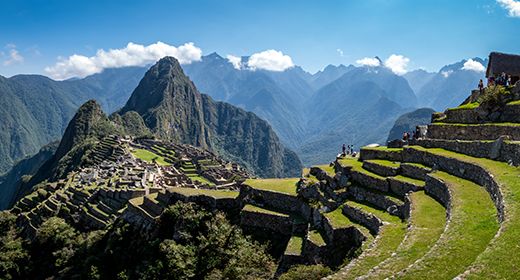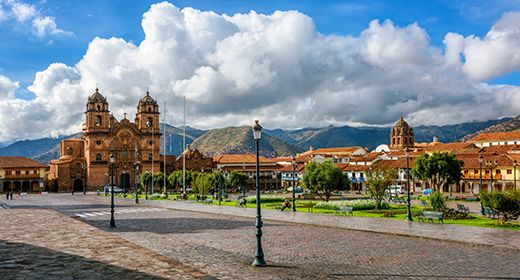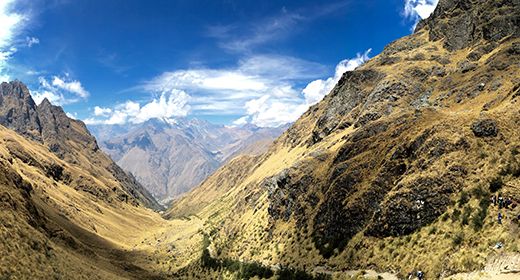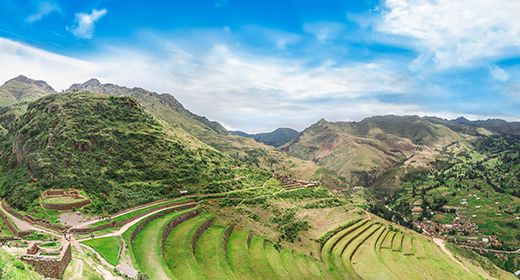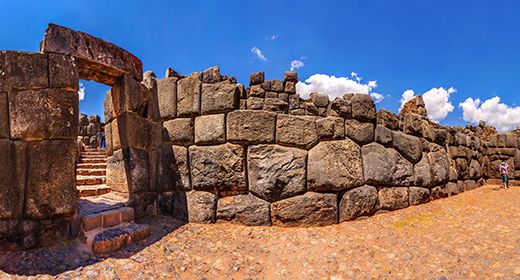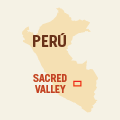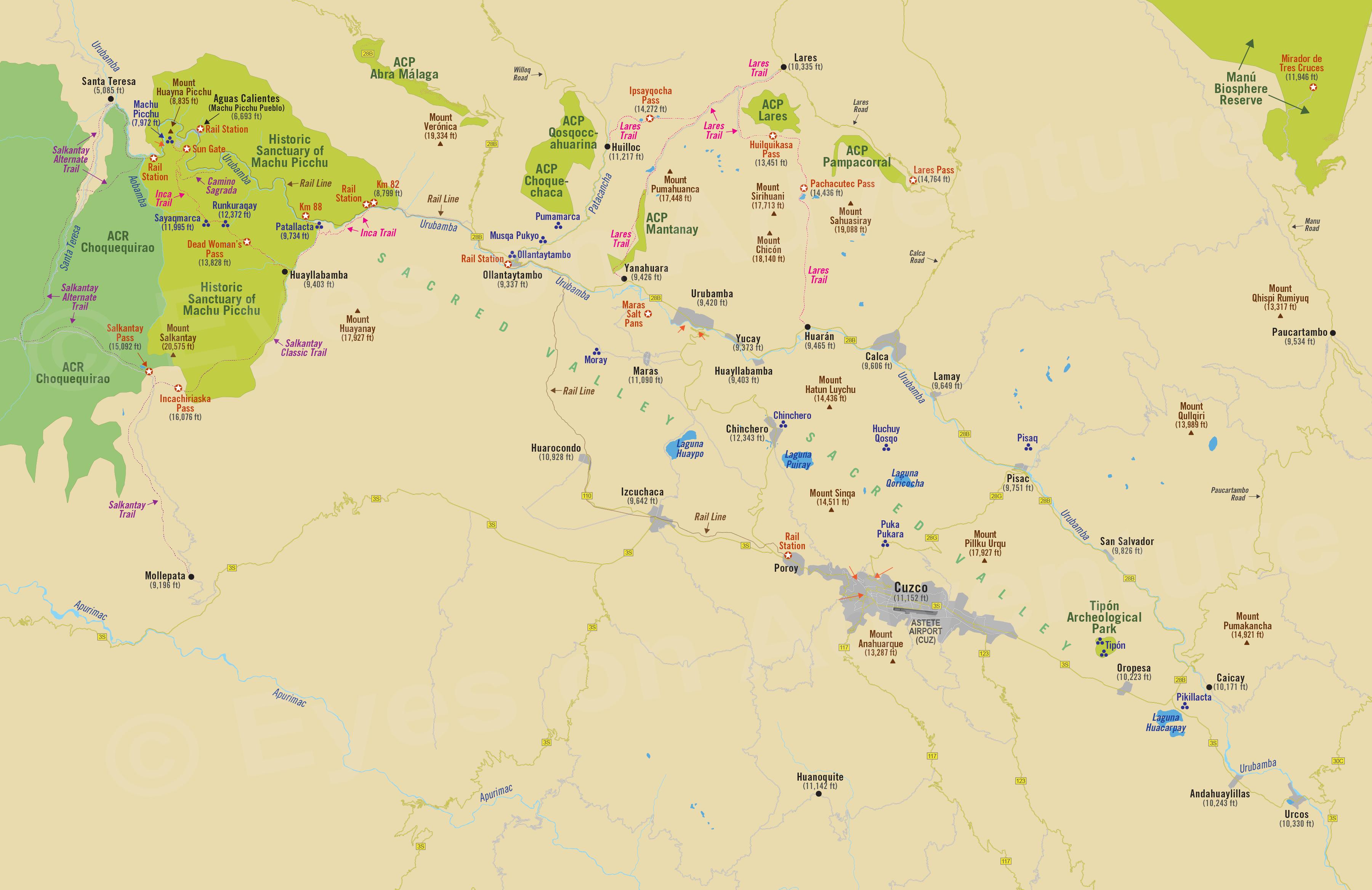Sacred Valley
Region Links: Perú Amazon North, Perú Amazon South, Sacred Valley
Peru's most visited region is the historically and culturally rich 'Sacred Valley of the Incas' and the nearby ruins of Machu Picchu, Ollantaytambo, and Pisac.
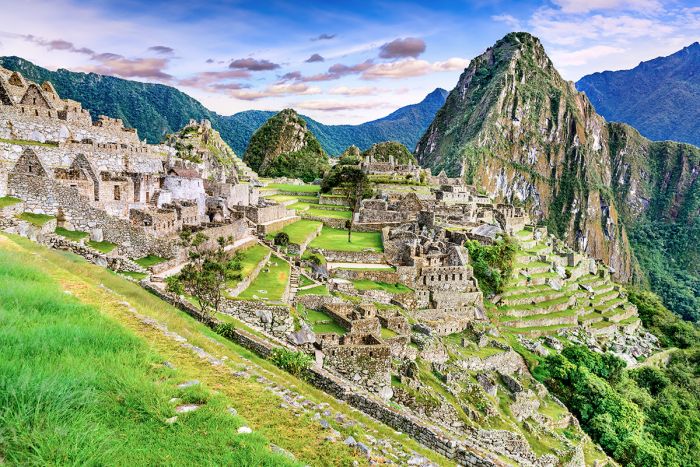
The Inca ruins at Machu Picchu with Huayna Picchu Mountain in the background.
The Sacred Valley
The Inca civilization, which rose to prominence in the Peruvian highlands in the early 13th century and became the largest empire in pre-Columbian America, occupied a large portion of western South America. Its administrative and political center was the city of Cusco, in what is now known as the Sacred Valley.
At its most powerful, the Inca empire included modern-day Peru, western Ecuador, western and south-central Bolivia, northwest Argentina, the southwestern edge of Colombia, and a large portion of modern-day Chile, and was a state comparable to the historical empires of Eurasia. The Inca empire ended when the Incas were conquered by the Spanish during the 16th century.
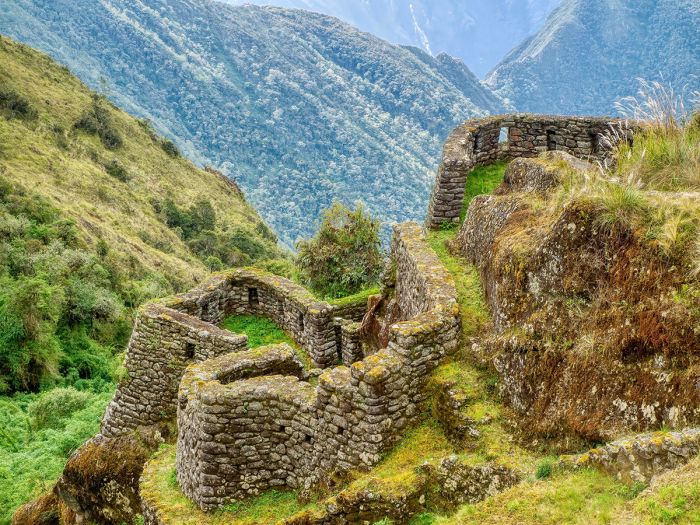
Inca ruins along the Inca Trail trek to Machu Picchu.
The Sacred Valley is Peru's most popular tourist destination. Known locally as El Valle Sagrado or Vilcamayo to the Incas, who originally built the city, is located about 30 kilometers northwest of the city of Cusco. The valley itself follows the Urubamba River, which eventually flows into the Amazon rainforest to the east and includes numerous ancient Inca sites, including Ollantaytambo, Pisac, and of course, Machu Picchu.
The Incas were advanced agriculturalists who took good advantage of the rich soil in the alluvial plains that line the river, growing an astounding variety of produce, most notable potatoes and maize (corn).
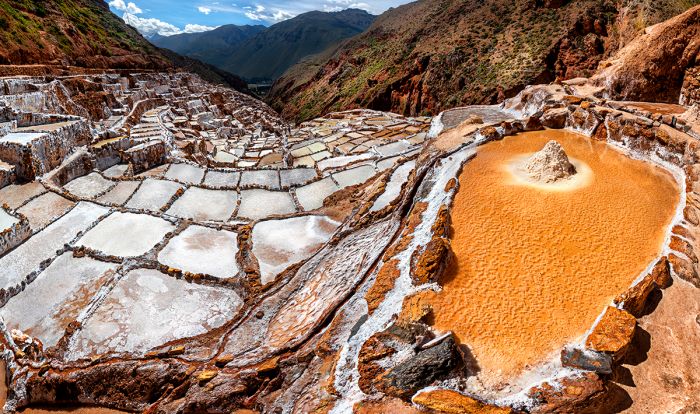
The Salineras de Maras (salt mines) in Peru's Sacred Valley.
The city of Cusco was built by Spanish conquerors atop the remains of Inca palaces and temples. Modern-day Cusco is a bustling city full of Andean culture, Inca ruins, and is the launching spot for most tourist explorations of The Sacred Valley and surrounding highlands. There are a large number of ancient ruins that can be visited on driving day-trips from Cusco, including Ollantaytambo, Písac, Chinchero, and many others.
The very popular, but challenging, Inca Trail takes over two days to hike, offers incredible vistas, stop-offs at various Inca ruins, and ends at Machu Picchu. The hike requires good fitness due to the steep mountains and altitude, but is well worth it for travelers who love to hike. Those who wish to skip the hiking adventure can also ride a luxury train to see the ancient citadel.
There are a number of other hikes in the mountains above The Sacred Valley, some of them short and some involving many nights of camping.
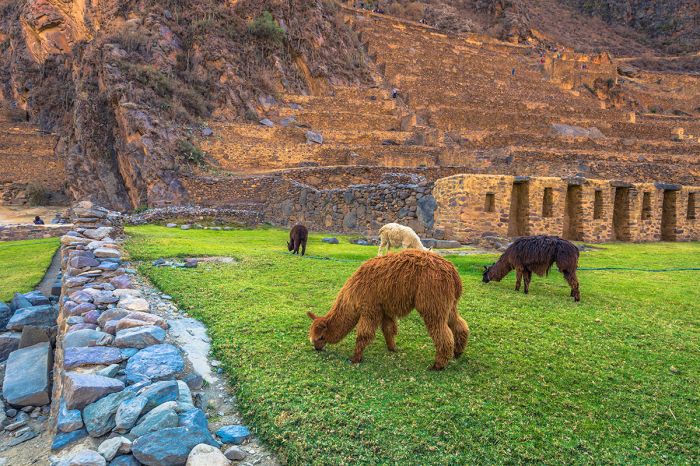
Llamas grazing at the ancient Inca ruins of Ollantaytambo in the Sacred Valley, Peru.
Cusco
The city of Cusco was originally constructed by the Incas and was the capital of the Inca Empire from the 13th century until 1533, when the Francisco Pizarro and Spanish conquered the region. Today, Cusco is a major tourist destination with over two million visitors annually and was declared an UNESCO World Heritage Site in 1983.
After the Spanish conquest of the Incas, Cusco became the administrative center of Spanish colonization and the spread of Christianity in the Andean world. The city became prosperous due to agriculture, cattle raising, and mining, as well as its trade with Spain. The Spanish colonists constructed many churches and convents, as well as a cathedral, university and archdiocese.
While many of the Inca structures were destroyed by the Spanish to make way for their own buildings, some of the Inca structures still survive today. Like most of the Inca-built ruins in the Sacred Valley, how the large stones were quarried and transported to the site by the Incas remains a mystery.
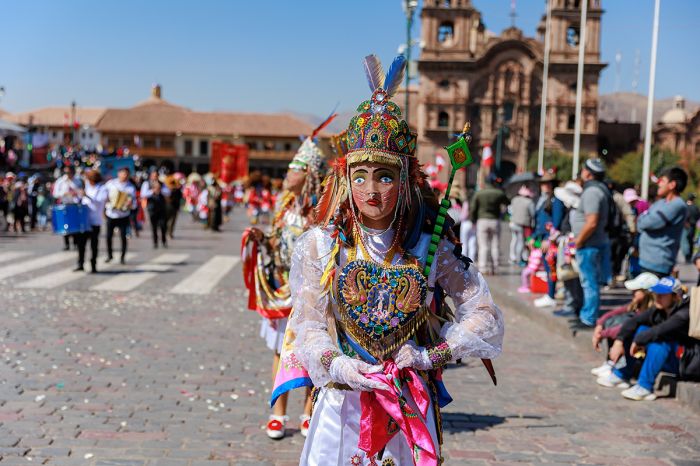
Dancers in typical costumes celebrate to honor La Virgen del Carmen in Cusco's main square.
The Inca Trail
There are a good number of options for trekking in the Andes Mountains around the Sacred Valley, but by far the most popular is the Inca Trail. The reason is that at the end of the trail, trekkers arrive at the Sun Gate leading down to the ancient ruins of Machu Picchu.
The Inca Trail is a 3 or 4-day/2 or 3-night hike that requires a degree of fitness due to the altitude, but does not require any technical skills at all. The trail is very popular and booking well in advance is definitely a good idea. All trekking groups are assigned a guide and there is not an option to hike on one's own without a licensed guide.
Trekkers hike during the day and the nights are spent camping in basic tents. Porters carry all of the food and camping gear, as well as prepare all meals, but trekkers should be prepared to carry a small backpack with water and snacks.
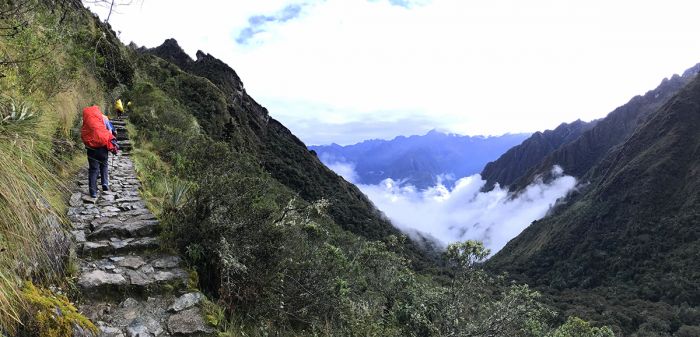
Inca Trail hikers on their way to Machu Picchu.
Although the trek involves some strenuous trekking, the incredible views along the way are more than worth it.
There are also other options for getting to Machu Picchu, including alternate routes with shorter duration and no camping, as well as donkey-riding and staying in lodge accommodations instead of camping. Those looking for a more challenging trek to an impressive site can opt for The Choquequirao Trail, which takes 4-5 days and ends at a wonderful ancient citadel.
Most visitors to Machu Picchu avoid any hiking and take a 3-hour train journey from Cusco, which follows the route of the Ollantaytambo River and ends at Machu Picchu Station in the pleasant resort town of Aguas Calientes. A short bus ride then takes visitors up to the ancient ruins.
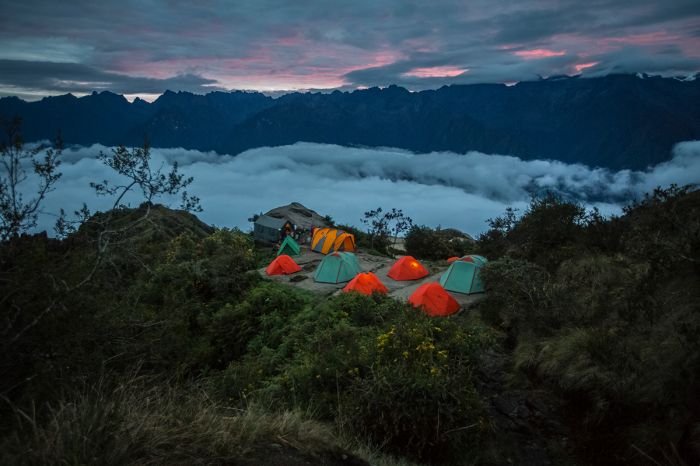
Camping at night along The Inca Trail, Peru.
Machu Picchu
The ancient Inca citadel of Machu Picchu was constructed in the mid-fifteenth century by Emperor Pachacuti out of huge slabs of granite. Like many of the Inca sites in the Sacred Valley, it boggles the mind to imagine how such massive blocks of stone, weighing many tons, were carved and moved into place.
There are over one-hundred flights of steep stone steps connecting the site's many temples, storehouses, and terraces. The views of the river and valley below are breathtaking and in the distance, the snow-capped peaks of the Salcantay Mountains can be seen. The best way to enjoy the site is with a knowledgeable guide.
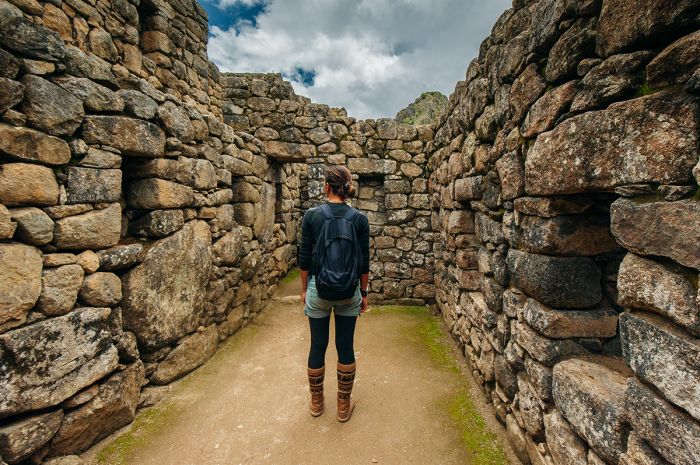
Exploring the Inca ruins at Machu Picchu.
In high season, the site can become crowded, with over five-thousand visitors a day. Despite this large number of daily visitors, the site limits access and booking well in advance is recommended.
At the northern end of the Machu Picchu site is Huayna Picchu, a prominent peak that can be climbed to the top via a trail and many stone steps. The climb is not for the meek, as the route is steep and anyone without a head for heights should take a pass.
The route up includes other small ruins and the view from the top down to Machu Picchu and the surrounding valley is mind-blowing. Access to this sacred peak is limited to 400 people per day in two sets of two hundred leaving at different times. Book in advance!
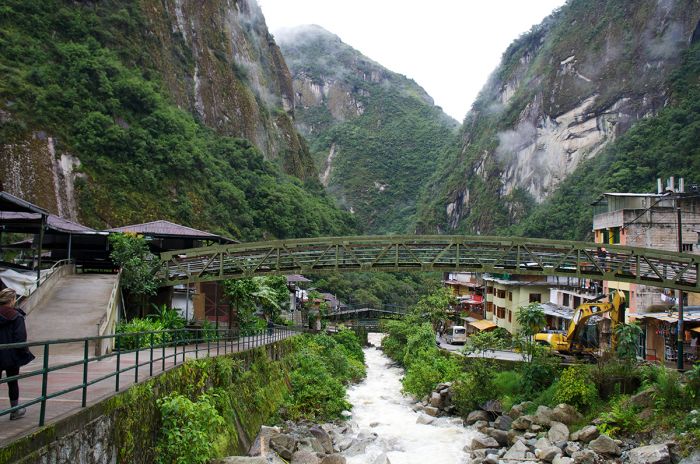
The Urubamba River as it flows along the town of Aguas Calientes in Peru.




